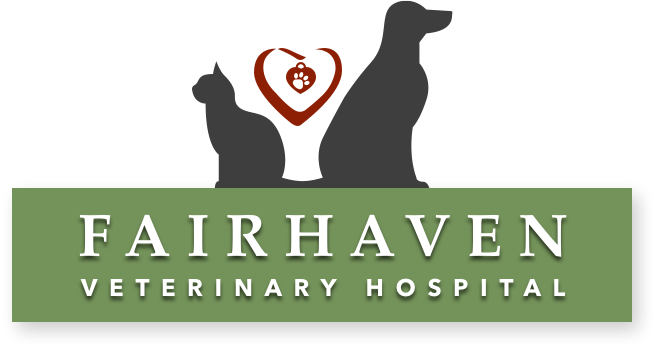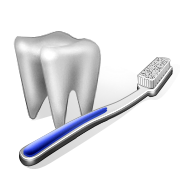Dental Disease Prevention: Professional and Home Care are both needed!
 Chronic oral infection is one of the most frequently diagnosed health problems for pets. An astounding 80 percent of dogs, and 70 percent of cats, show signs of oral disease by age 3, according to the American Veterinary Dental Society (AVDS). Small dogs are particularly prone to periodontal disease, and an estimated 50% of cats will develop at least one painful “Tooth Resorption” lesion during their lifetime.
Chronic oral infection is one of the most frequently diagnosed health problems for pets. An astounding 80 percent of dogs, and 70 percent of cats, show signs of oral disease by age 3, according to the American Veterinary Dental Society (AVDS). Small dogs are particularly prone to periodontal disease, and an estimated 50% of cats will develop at least one painful “Tooth Resorption” lesion during their lifetime.
- Regular Preventive Care, both at home and in the animal hospital, is needed to help prevent chronic periodontal infection in your pet’s mouth.
- The end result of poor dental preventive care, for too many animals, is chronic oral infection, chronic oral pain, and eventual tooth loss. Untreated oral infection can have serious effects on the health of organs throughout the body, including the heart, liver and kidneys.
- Mouth odor and visible gum swelling/redness are indications that your pet already has oral infection and needs its teeth cared-for now.
What regular dental care does my pet need?
- Yearly physical exams help identify oral disease processes before they progress.
- Regular Professional Dental Cleanings and Examinations, under anesthesia, are needed to remove plaque and tartar from the surface of the tooth and from below the gumline where disease is occurring. Non-anesthetic scaling of surface tartar does nothing to prevent chronic oral infection and periodontal disease.
A Professional Cleaning and Exam should be performed:
- Any time your pet has any mouth odor, or significant visible dental tartar or gum swelling/redness
- Starting at the age of 3 for small dogs, then repeated every 12-18 months, even if the teeth appear healthy. Small dogs are quite prone to chronic periodontal disease that is often not visible on exam. More frequent cleanings may be needed if significant periodontal disease is already present.
- Starting at the age of 4 for large dogs and cats, then repeated every 12-18 months, even if the teeth appear healthy.
- Daily home tooth brushing is the best way to help keep your pet’s teeth healthy. Remember to only use animal approved toothpaste. Please see our “How to Brush Your Pet’s Teeth” handout.
- Hill’s t/d “tartar-diet” prescription food is recommended for all cats and small dogs, starting at 1-year of age. This food significantly reduces plaque and tartar by gently “scrubbing” the surface of the tooth every time they chew.
- Other Plaque Reducing daily chew-treats, rinses and water-additives can be very helpful in addition to daily brushing, or for those who simply cannot brush their pet’s teeth. We strongly recommend using a proven product approved by the Veterinary Oral Health Council ( org ). Most of these products can be ordered through our online store.
Check out our blog posting for detailed information on professional dental care at:
http://fairhavenvet.com/oral-health-and-your-pet-does-it-really-matter/
How to Brush Your Pet’s Teeth
The very best way to prevent and manage periodontal disease is daily brushing with a soft toothbrush. Brushing every other day still offers some benefit. Less frequent brushing may not be very helpful.
To encourage your pet to cooperate for tooth brushing, it helps to make it seem like special treat. You can encourage cooperation by “flavoring” the toothbrush with something that your pet will enjoy. Options include CET Toothpaste (there are several palatable flavors available), a beef or chicken broth solution, or a very small amount of peanut butter.
- Tooth Brushing is ideally started in the young puppy or kitten, who then accept it as part of everyday life. Most animals of any age can be trained to accept tooth brushing with persistence and patience.
- First coat the brush with the “goodie.” Without restraint, allow the pet to lick the brush 3-5 times daily for a week or more.
- Once the tooth brush has positive association, try brushing the teeth. At first the pet will lick the brush as you make cover each tooth surface.
- Gradually, as familiarity and comfort with the brush is established, you can start restraining and doing more intentional brushing. It may take a couple of weeks until you and your pet are comfortable with this process.
- If possible, try to use a circular motion with the emphasis of the stroke away from the gum line.
- For most pets, the tartar is mainly on the cheek side of the teeth, so it is not necessary to brush the tongue side of the teeth.
- To get at the upper back teeth you may need to hook your index finger in the corner of the lips, gently pulling up and back, lifting the lips away from the teeth.
- If you pet is only partially cooperative, focus on the areas where the tartar builds up the most. This is usually the upper canine teeth (fangs) & the upper back large chewing teeth.
- Occasionally pets are so interested in the “goodie” on the brush that it becomes difficult to actually brush the teeth. If this happens use the “goodie” only once a week, to keep your pet interested and cooperative.
- Once trained, brushing takes just a minute or two a day and will greatly improve your pet’s oral health.
- If you are having trouble with this, let us know; we will be happy to give you additional brushing instructions or a demo with your pet in our office.

